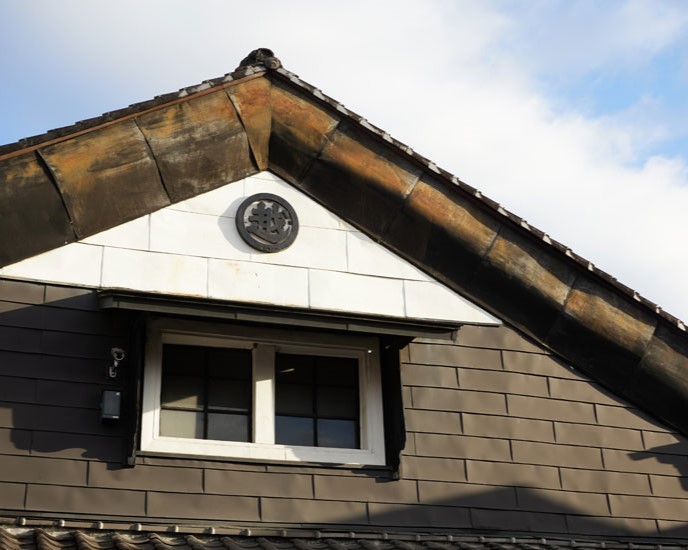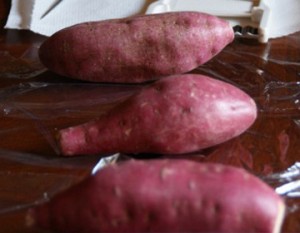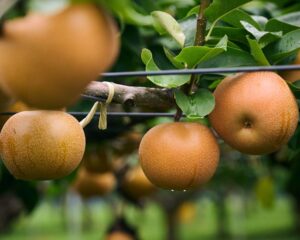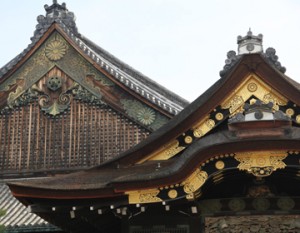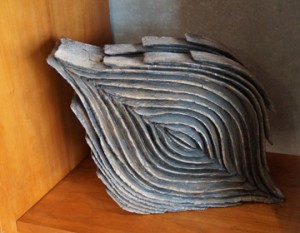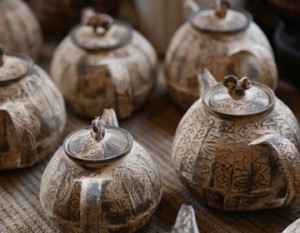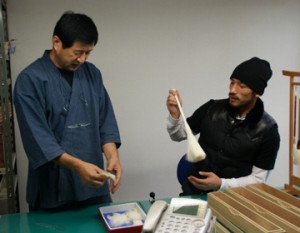Hououbiden” is loved by people of all ages for its fruity aroma and gorgeous, high-quality flavor.
This sake is brewed by the Kobayashi Shuzo in Oyama City, Tochigi Prefecture, which enjoys popularity not only for its sake, but also for its liqueurs and spirits made from Japanese fruits. What lies behind the company’s continued challenge to look to the future, rather than being bound only by tradition?
Brewing Sake in the Blessed Land of Mita

The main brewery of Kobayashi Shuzo is located in Soshima, Oyama City, Tochigi Prefecture.
This area, which was called “Mita-mura” until the early Showa period, is located in the northern part of the Kanto Plain and is blessed with beautiful rice paddies stretching as far as the eye can see and abundant underground water from the Nikko mountain range, which is pumped up from wells all around the area.
Kobayashi Shuzo’s “Hououbiden” was born in a place blessed with rice and water.
Today, more than 150 years after its establishment in 1872, the brewery is led by Masaki Kobayashi, the fifth-generation brewer, and his wife Mayumi.
Masaki Kobayashi and his wife Mayumi, who lead “Hououbiden

Mr. Kobayashi joined the brewery more than 30 years ago in 1991.
After graduating from the Department of Brewing and Fermentation at Tokyo University of Agriculture, where the heirs to many of the nation’s sake breweries gather, he joined Kobayashi Sake Brewery Co.
It was there that Mr. Kobayashi met the man of his dreams for both himself and the Kobayashi Brewery. Mayumi, who would later become his life-long companion.
Mayumi was an instructor of sake brewing at the (former) Iwate Prefectural Brewers’ Institute, the leader of the Nanbu Toji, the largest Toji group in Japan, and had acquired the most advanced sake production technology at a national institution.
The Power of the Toji and His Wife Supported a Brewery on the Verge of Going Out of Business

Today, the Kobayashi Shuzo is renowned for producing a number of excellent sake products, but when Mr. Kobayashi returned to the brewery, it was a very small sake brewery with less than 10 bottles brewed and very poor management. The building was dilapidated, and the brewery had no funds to invest in equipment or even to buy the rice needed to make sake.
Under these circumstances, the brewing of “Hououbiden” started with Mr. Kobayashi, who returned to the brewery, and the current toji, Mr. Tokumatsu Fujita, who had been brewing sake at Kobayashi Brewery for over 20 years, but Mayumi, with her knowledge of cutting-edge sake brewing, was not there.
Ties and Decisions in the Toji System

In the world of sake brewing, there is a system called “toji.
The toji, the chief sake brewer, would recruit and organize a group of professional sake brewers from the village or town during the off-season in the winter, and they would work as migrant workers to make sake. In recent years, the number of breweries that employ toji or year-round employee brewers has increased, and the exchange of skills has become more active.
However, there was a high threshold of sake brewing techniques and schools of sake brewing that were not allowed outside the brewery at that time. Mayumi, who studied at the Iwate Brewing Institute, the leader of the Nanbu Touji, did not participate in sake brewing as a sign of respect to Touji Fujita of the Yamauchi Touji in Akita Prefecture, who belonged to a different school of sake brewing.
The brewing process between Ms. Kobayashi and Mr. Fujita did not go well, and five years passed without any improvement in sake quality.
One day, many liquor dealers in Tochigi Prefecture who sold “Hououbiden” were concerned about the situation and called them up in the middle of the night to complain, “What is the point of not taking advantage of Mayumi’s sensitivity, skill, and connections! What is the point of not taking advantage of Mayumi’s sensitivity, skills, and connections?
Mayumi was moved by these passionate words and realized, “I have no choice but to respond to them with sake! Mayumi was so moved by his passionate words that she realized that she had no choice but to respond to him with sake.
Mayumi decided to participate in the sake brewing process, and the Kobayashi Shuzo gained a powerful ally.
Hououbiden” Specializing in Ginjo-shu

Mr. Kobayashi, Mr. Fujita, and Mayumi have joined forces to brew sake in the “ginjo-zukuri” method.
Ginjo-zukuri is a brewing method that uses white rice (less than 60% milled rice) polished to a bran content of 40% or more and fermented at a low temperature for a long time to produce sake with a ginjo aroma like melon, muscatel, apple, and other fruits from starchy sake rice.
In those days,” says Kobayashi, ”if you wanted to make good sake, you inevitably had to make ginjo.
In addition, instead of pressing the mash with a conventional machine, the brewer put the mash in a bag, which is used only for contests and other such events, to collect the drops that naturally drip down from the mash under its own weight.
Although this method requires more time and effort than other methods of pressing, it allows the sake brewer to clearly detect the careful sake brewing process, the sweetness of the rice, and the rich ginjo aroma when the sake is first sipped. Thus, after much trial and error by the three brewers, the famous sake “Hououbiden” was born.
In 2004, Houou Mita won the gold medal at the National New Sake Competition, the gateway to success in the sake industry. The name “Hououbiden” became well known throughout Japan after winning the gold medal two years in a row.
Hououmida, born from overcoming hardships, has now won numerous awards at national and international competitions, and has spread from Hokkaido in the north to Kagoshima in the south, and is even served in the first class of JAL’s domestic and international flights. It is no exaggeration to say that Hououmida is now a sake that not only Tochigi Prefecture, but also Japan, can boast of to the world.
Cherish the old traditions and sake brewing

Kobayashi Shuzo insists on brewing sake in the traditional way.
Take, for example, the process of steaming sake rice. In recent years, many breweries use boiler steam to steam a large amount of sake rice, which can produce a constant and stable amount of heat.
However, at the main brewery of the Kobayashi Shuzo, rice is steamed in a traditional Japanese kettle over direct heat.
Adjusting the heat and other steaming conditions requires skill and time, but the rice steamed with the clean steam created by the direct fire in the Japanese-style kettle, Mayumi says, “produces an indescribable, well-balanced steamed rice. The quality of the steamed rice naturally leads to the taste of the sake.
All koji is also made by hand.
The experience of learning how to deal with the invisible koji fungus to produce delicious sake is an important and irreplaceable treasure.
Even the most advanced koji making equipment is meaningless unless it is operated based on the experience of the brewer.

The brewery also insists on manual labor during the pressing stage, in which the moromi that has finished fermentation is separated into sake and sakekasu (sake lees).
The brewers continue to use the traditional method of “Fukuro-zuri,” in which the moromi is hung in several cloth bags to collect the naturally dripping sake, or the Sase method, in which bags filled with moromi are stacked in layers and pressure is applied slowly from the top.
Although fully-automatic pressing machines exist, it is said that the unique “Hououbiden-like” flavor can be created by the hands of a person with many years of experience and a keen sense of sensation.
Hououbiden” from now on

After more than 30 years of running the sake brewery with all his might, Mr. Kobayashi’s current focus is to pass sake brewing on to the young people who will lead the next generation.
In his younger days, Mr. Kobayashi was so focused on sake brewing that he was trapped in the mistaken feeling that “I will do everything by myself,” and there was a time when he did not even want his fellow sake brewers to touch the rice.
After realizing that the gold medals he won in this way had no value, and that there was no joy and happiness to be shared with his colleagues, he began to value his colleagues and carefully teach and watch over his young brewers, while respecting the “harmony” of the brewery as a whole.
He continues to preserve traditional sake brewing not only because of the taste of sake, but also because he wants the next generation to experience the experience and sensibility that can only come from traditional sake brewing.
Beyond that, we hope to convey the appeal of sake to the world in an easy-to-understand way.

In May 2022, the Kobayashi Shuzo built the “Hishogura” in the neighboring city of Tochigi.
The new state-of-the-art brewery is in stark contrast to the main brewery, where traditional sake brewing is carried out.
The most important thing for making delicious and appealing sake is to have individual brewers with colorful personalities, charms, and characters… and to have them unite in a harmonious way to brew delicious sake. and the desire to “brew delicious sake” becomes one. In this context, “Hououbiden” has grown its brewers, and each brewer, who has been trained in the basics of sake brewing, is about to open a new door in a new brewery based on the main brewery. I hope you will look forward to the birth of the new “Hououbiden.
Expectations are high for the new “Hououbiden,” which is aimed at while weaving together traditions with the younger generation of brewers.



